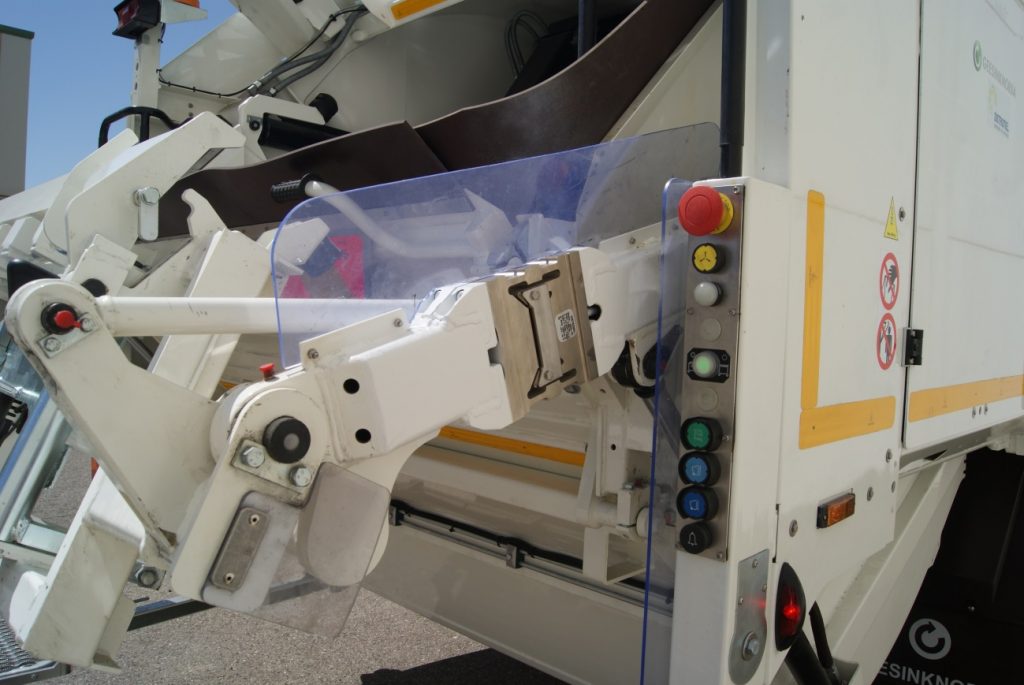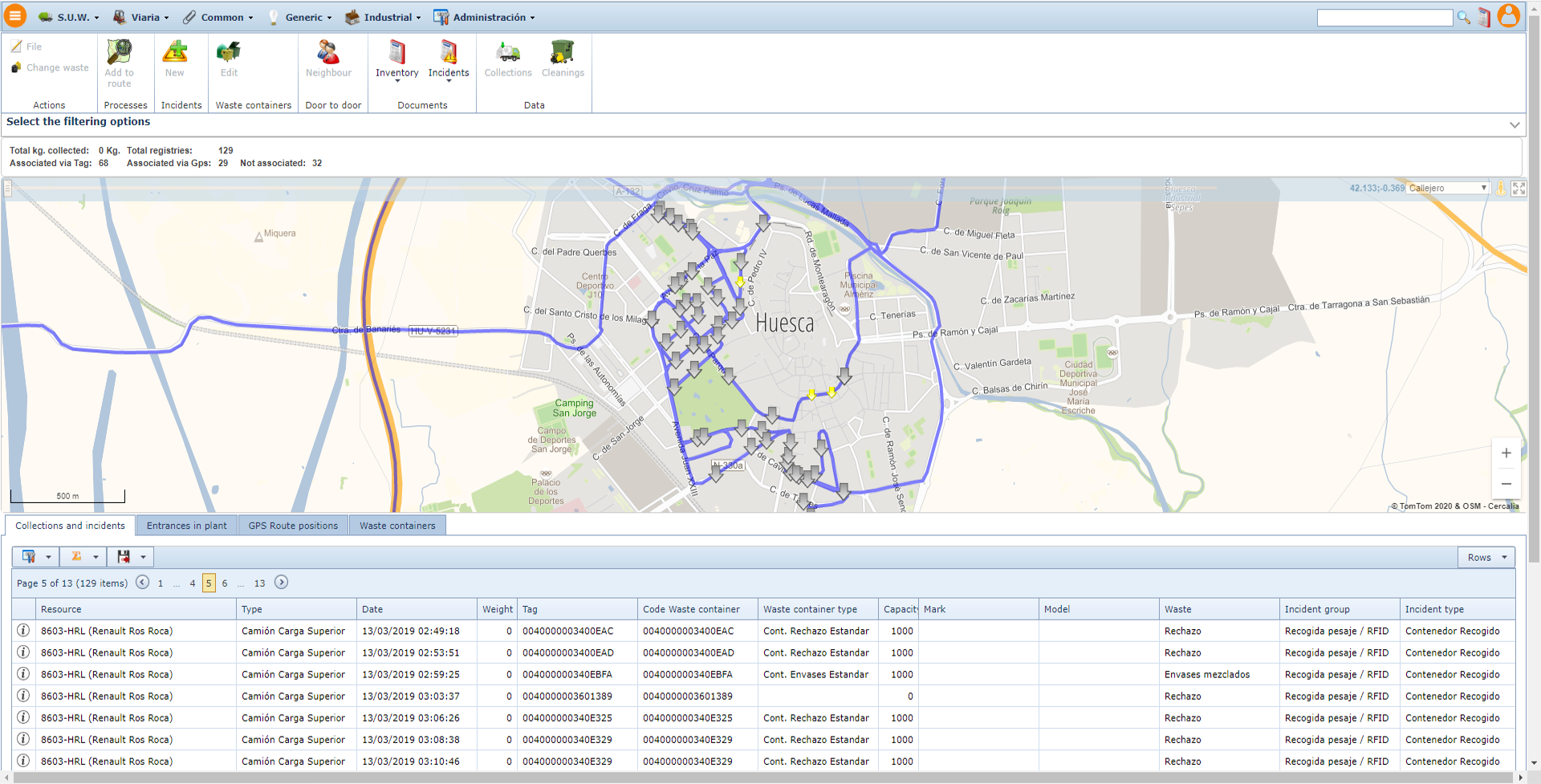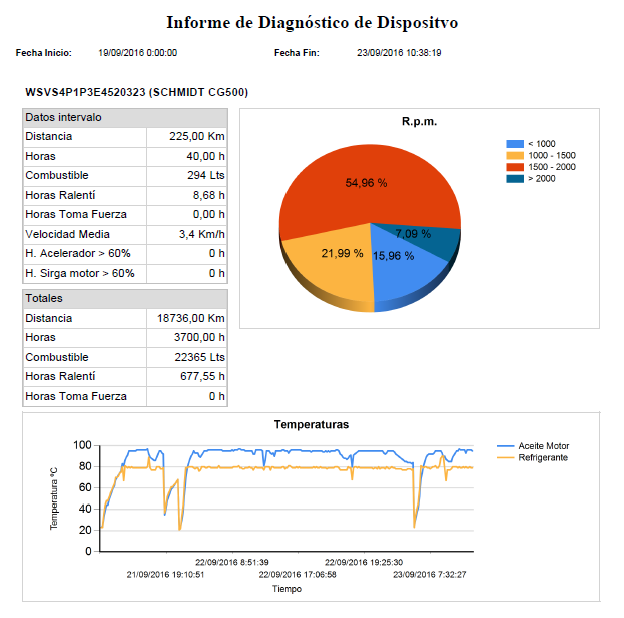ICT systems for optimization in urban services management
ICT systems for optimization in the management of key urban services in the control and optimization of daily routes and collection services.
Currently, the society that lives in the cities is faced with different and concrete dilemmas that must be resolved in a sustainable way based on social, economic and environmental pillars. The development of large cities must turn to be socially acceptable, economically viable and environmentally respectable. Based on these premises, sustainable development has been defined since the completion of the Brundtland report. There is no doubt that due to the current situation, technology plays a crucial role in this process, and that is why ICT companies such as Distromel and products such as siGEUS are essential to achieve these purposes.
The improvement in the management of urban services is one of the most fundamental and fundamental tasks of public entities due to their high consumption of human and mechanical resources, the high cost they entail and their high level of involvement with the environment. For this, hundreds of public entities and service companies have been incorporating management and control software such as siGEUS, a complete and specific product for the management and visualization of the evolution of cleaning brigades, solid waste collection and proper maintenance. of public space and its equipment. In this way, it has been possible to bring together in a single common platform the integral management of urban space using the most advanced technologies developed from the experience of 20 years with control and measurement products.
In addition, these products must be backed by R&D departments that continuously advance these products in order to always be at the forefront of technology while avoiding the dreaded obsolescence.
SiGEUS platform
The siGEUS platform combines management software, mobile applications, data processing center and all electronic devices (Hardware) installed in vehicles and street furniture. This platform meets the requirements of companies and public institutions that carry out the management of urban services in municipalities, associations and regions, and was created with the objective of unifying all the processes of the urban environment that are capable of management, control and optimization of urban space through of the information obtained by the devices installed in the vehicles.
The siGEUS software integrates all the processes for an optimal management of the urban space, from the management of the container and paper mill park, vehicle fleets, collection routes, analysis of this data or to the planning and control of services, thus constituting a valuable Urban space management tool. In addition, it allows to visualize, on a cartographic engine, all the evolutions and associated data of the electronic devices, being one of its main features its modular design together with the ability to integrate the entire system. Its visual interface is characterized by being highly configurable, lightweight and with an attractive visual design, which facilitates interaction with the application by the end user. One of the latest developments in siGEUS software is the design of a new module for the control of door-to-door, commercial and industrial collection for the individual collection control of each client.
Distromel has a complete platform for Smart Cities in urban services. A Smart City or smart city is that city that applies information and communication technologies (ICT) in order to provide it with an infrastructure that guarantees sustainable development by increasing the quality of citizens, being economically viable and environmentally respectable.
And it is also important that the software allows the possibility of integrating any other horizontal or vertical platform in the same management software. This is because we live in the era of communications and it is an obligation that there is a continuous transmission of data between the different actors in order to achieve the creation of Smart City with the established objectives.
MATERIAL AND METHODS
The siGEUS platform requires systems to plan services, control them and obtain data on the actions carried out. These systems provide an exhaustive control of urban services allowing their improvement and optimization thanks to the parameterization of the information obtained. One of the most interesting features of these systems is their scalability, since it allows the progressive installation of the systems without having to remove the previously equipped ones.
- Container weighing system: these systems allow to know the weight of each container collected automatically and the collection of a certain waste by areas, areas or municipalities. In this way, data can be obtained that will allow analyzing among others the behaviors of citizens regarding recycling by fraction and by areas.

- GPS / GPRS location system: location and geo-position device for fleet control designed to obtain real-time information. These systems are used for any type of vehicle used in the management of urban services such as collectors, sweepers or vans. Road cleaning vehicles can incorporate an activity signal to know, for example, when they have activated the brushes in the sweepers.
- Can Bus connection: through the FMS interface (Fleet Management Systems) it is possible to obtain the data of the Can Bus such as the fuel used, hours, revolutions, torques and engine temperatures,% pedal operated (brake and acceleration) or relative times of driving.
- Urban Services Management App: through the Android App it is possible to manage containers, wastebaskets, incidents, fleets and collection of industrial containers. This App allows you to control the entire space management cycle from a Smartphone or Tablet through the location of work equipment as well as manage urban elements such as maintenance of containers and wastebaskets (washes, discharges, discharges), or incidents in the same elements in a simple and fast way.
- On-board electronics: this 7 ”touch computer in the cabin allows the driver to be identified, download route, generate incidents, receive messages from the software and follow the guidance through its touch screen among other features.
- Information entry buttons: the introduction of information by operators such as the percentage of filling that is displayed in the collection or an incident found in the container provides statistical data that will show indicators to be taken into account by service companies and public administrations.
- RFID container identification system: these systems allow you to monitor all waste collection data such as the place of collection of each container, date and time, and inventory of the entire container park, or even the washing of each container by installing this system in container washing vehicles.
- Volumetric container filling sensors: these electronic devices for container filling control incorporate digital technologies for sending data via wireless. With ultrasonic technology, it measures the waste and sends a percentage of filling of the container in order to optimize the service through a reduction in the collection frequencies.
OBTAINING AND ANALYSIS OF RESULTS
All data obtained through wireless communications are housed in the Data Processing Center to be analyzed in the siGEUS software. These data are sent in real time and are available in the management software through grids, in report mode, on map or even in graphics.
A large amount and diversity of data can be consulted in a simple and fast way, speeding up the costly tasks in physical reports.
Data:
- GPS route in real time and historical stops, speeds, accelerations, times in services …
- Inventory of containers with all the data of the same, collected, washed, incidents, type, capacity, dates …
- Incidents generated and resolved by different means such as the App, the keypad, on-board electronics or directly from the management software.
- Filling percentages either by means of the volumetric sensors in the containers or by entering values in the keypads.
- Statistical data by areas, neighborhoods, municipalities and communities or regions of collection, washing, weighing, km traveled, time.
- Device diagnostic data: distance traveled hours, fuel used, idle hours, strength hours, average speed,% brake pedal and accelerator, engine revs and temperatures.

- Collection and washing of containers with the last GPS position of each element, number of collected in the desired time interval, containers not collected, date and time of services, weighing of each container …
- Services executed and not executed correctly with the corresponding resources, maintenance of the same and any type of information related to both mechanical and human resources.In addition, all systems are bidirectional, so any changes made to the computers shipped as incidents or any management of urban elements is reflected in real time in the software, and vice versa. Due to this bidirectionality of the system the operator receives orders to resolve incidents or messages to modify routes according to the needs of the moment, or the service address can see in real time everything done by the operator, for example observing the generation of incidents in time real reducing to the maximum the resolution time of the same.
 Consult siGEUS of the collection of a collection vehicle with the GPS route
Consult siGEUS of the collection of a collection vehicle with the GPS route
DISCUSSIONS AND CONCLUSIONS
The installation of these described systems provides an immense amount of data easily analyzed with the siGEUS software. With this tool it is possible to obtain parameters to take into account in future service planning in order to optimize them as much as possible. The implementation of these results allows us to obtain the desired purpose, an efficient service management.
- Route optimization due to the installation of volumetric filling sensors. They will only be collected when desired, reducing the working hours of both personnel and vehicles. You should not pick up a container to know if it is full or not, but the volumetric sensors will report the volume of filling, indicating the percentage of it. This will reduce unnecessary trips with the consequent temporary, environmental-energy and economic savings.
- Virtually the entire system works automatically. This gives simplicity and agility in the entire process for the operation by the staff.
- Digitalization of all service planning centralizing the management of human and mechanical resources with their tasks: routes, containers to be collected, incidents to be resolved, vehicle maintenance, shifts, schedules …
- Comprehensive control of all planned tasks and their correct execution. In addition to having the proof of demonstration that these tasks are being carried out as planned.
- Haste and efficiency in the resolution of incidents. Thanks to their detection in real time and with the location, type and means for the incident.
- Campaigning based on all historical data collected. These systems provide all the data of filling frequencies and weighing per container, specific areas, neighborhoods and municipalities. Therefore, the customs and predisposition of citizens will be known when pouring each type of waste by geographical area.
- Cost savings in both human and mechanical resources because route optimization allows for better time in tasks. In addition, due to the improvement in the driving of the operators reduces the economic costs of fuel.

ACKNOWLEDGMENTS
There are numerous offices of public service and administration companies that have these control systems. The interest and predisposition of both institutions together with the collaboration of companies are those that have achieved that today, the company has tools for the exhaustive control and analysis of the collection results and their subsequent benefit in the form of economic savings, control of the service for the citizen and optimization, allowing a remarkable environmental benefit.


